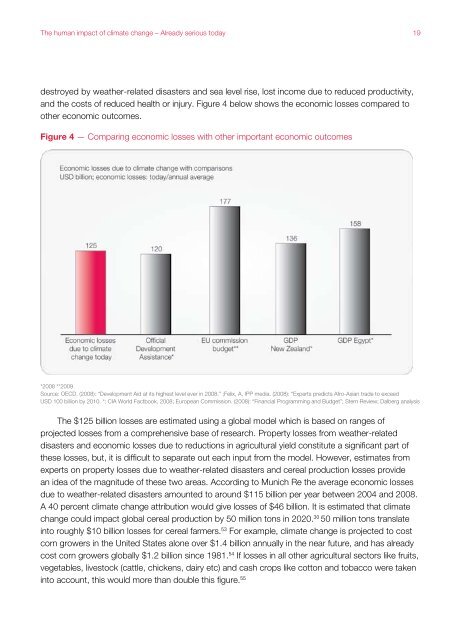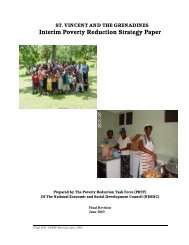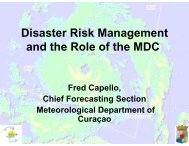The Anatomy of A Silent Crisis The Anatomy of A Silent Crisis
The Anatomy of A Silent Crisis The Anatomy of A Silent Crisis
The Anatomy of A Silent Crisis The Anatomy of A Silent Crisis
- TAGS
- anatomy
- www.bb.undp.org
You also want an ePaper? Increase the reach of your titles
YUMPU automatically turns print PDFs into web optimized ePapers that Google loves.
<strong>The</strong> human impact <strong>of</strong> climate change – Already serious today 19<br />
destroyed by weather-related disasters and sea level rise, lost income due to reduced productivity,<br />
and the costs <strong>of</strong> reduced health or injury. Figure 4 below shows the economic losses compared to<br />
other economic outcomes.<br />
Figure 4 — Comparing economic losses with other important economic outcomes<br />
*2008 **2009<br />
Source: OECD. (2008): “Development Aid at its highest level ever in 2008.” ;Felix, A, IPP media. (2008): “Experts predicts Afro-Asian trade to exceed<br />
USD 100 billion by 2010. “; CIA World Factbook, 2008; European Commission. (2008): “Financial Programming and Budget”; Stern Review; Dalberg analysis<br />
<strong>The</strong> $125 billion losses are estimated using a global model which is based on ranges <strong>of</strong><br />
projected losses from a comprehensive base <strong>of</strong> research. Property losses from weather-related<br />
disasters and economic losses due to reductions in agricultural yield constitute a significant part <strong>of</strong><br />
these losses, but, it is difficult to separate out each input from the model. However, estimates from<br />
experts on property losses due to weather-related disasters and cereal production losses provide<br />
an idea <strong>of</strong> the magnitude <strong>of</strong> these two areas. According to Munich Re the average economic losses<br />
due to weather-related disasters amounted to around $115 billion per year between 2004 and 2008.<br />
A 40 percent climate change attribution would give losses <strong>of</strong> $46 billion. It is estimated that climate<br />
change could impact global cereal production by 50 million tons in 2020. 30 50 million tons translate<br />
into roughly $10 billion losses for cereal farmers. 53 For example, climate change is projected to cost<br />
corn growers in the United States alone over $1.4 billion annually in the near future, and has already<br />
cost corn growers globally $1.2 billion since 1981. 54 If losses in all other agricultural sectors like fruits,<br />
vegetables, livestock (cattle, chickens, dairy etc) and cash crops like cotton and tobacco were taken<br />
into account, this would more than double this figure. 55







